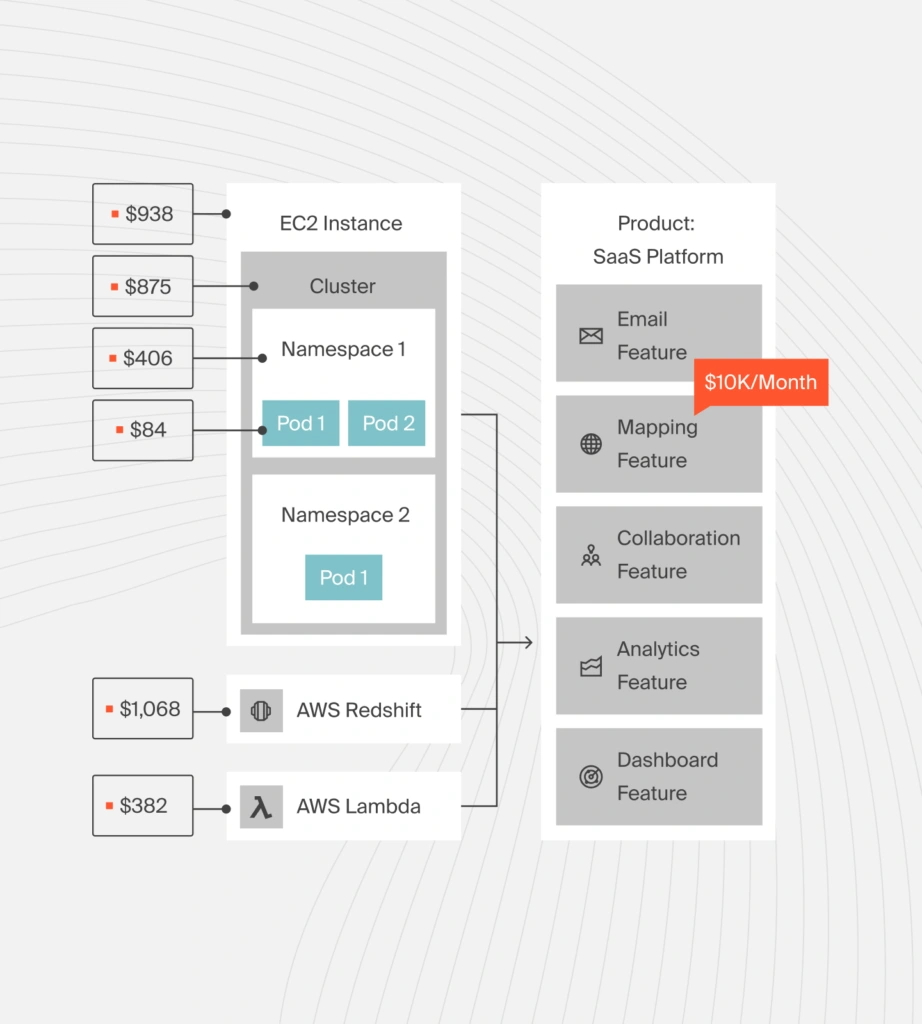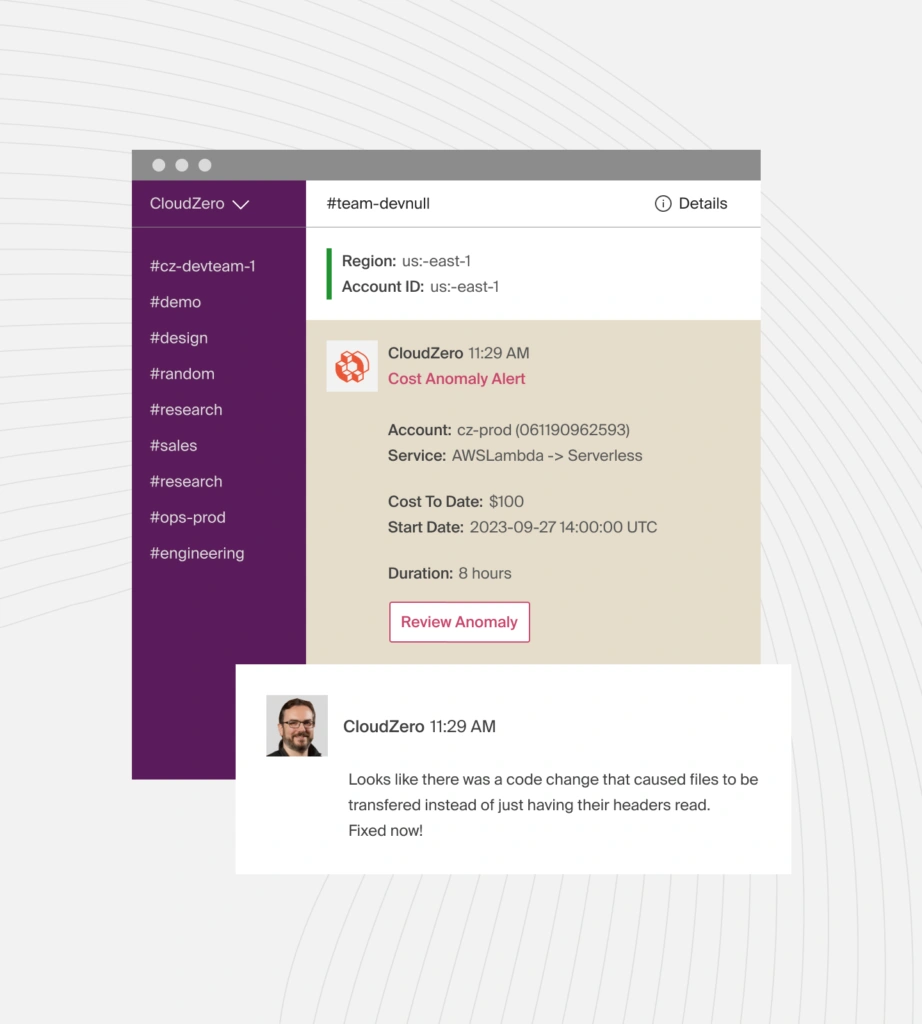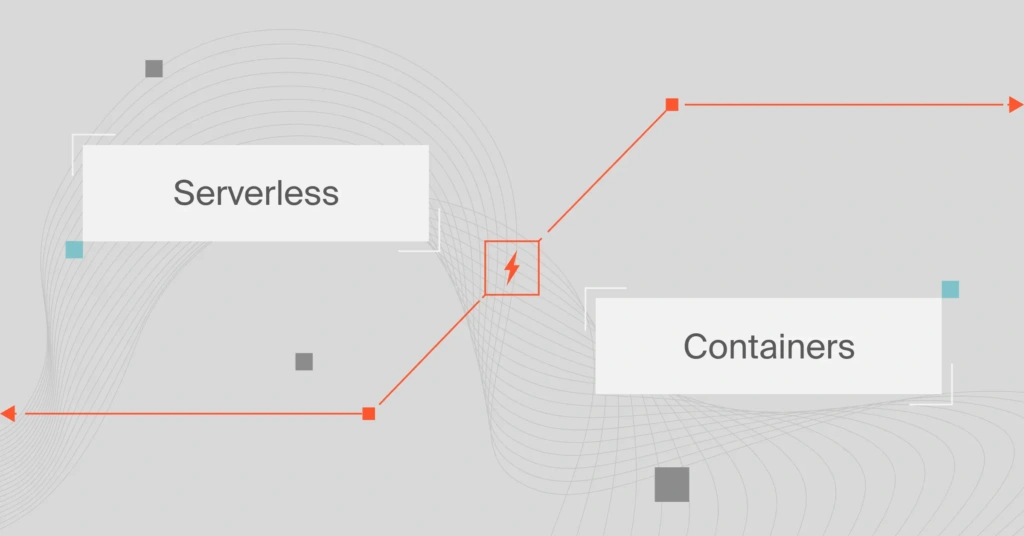Containers and serverless computing are two of the most popular methods for deploying applications. With the rise of microservices and modern DevOps, teams need faster, leaner ways to build and release software.
However, selecting the wrong architecture can slow down delivery, increase cloud costs, or lock you into tools that don’t scale with your business.
Both methods have their advantages and disadvantages. To choose the one that’s right for your business, you need to understand the pros and cons of serverless vs. containers managed on your own — and how each affects cost, performance, and scalability.
This guide breaks it all down so you can deploy smarter and spend less.
What Are Containers?
A container is a virtualization architecture that contains both an application and all the necessary components to run smoothly, such as system libraries and settings. That is, an application and all its dependencies are “packed into a dedicated box” that can run on any operating system.
Containerized applications are portable and can be moved from one host to another as long as the host supports the container runtime. Containers are faster and more efficient than virtual machines because only the operating system is virtualized in containers, which makes them more lightweight and faster than virtual machines.
The most popular container orchestrators are Kubernetes, Amazon ECS, and Docker Swarm.
What Is Serverless?
Serverless computing is a type of architecture in which computing power and backend services are available on demand. It is a practice of utilizing managed services to avoid rebuilding existing components in the cloud.
In serverless systems, the user does not have to worry about the underlying infrastructure; instead, the serverless provider manages and maintains all the necessary servers, allowing the user to focus on writing and deploying code.
The term “serverless” originates from the fact that the user is unaware of the physical servers, even though they exist.
Serverless Vs. Containers: What Are The Similarities?
While containers and serverless systems are distinct technologies, they share some overlapping functionalities.
In both systems, applications are abstracted from the hosting environment. This makes them more efficient than virtual machines. They still require orchestration tools for scaling. Their primary function is they allow the deployment of application code.
Serverless Vs. Containers: Core Differences
Here are the most distinct differences between containers and serverless:
Deployability
In general, serverless systems are easier to deploy because there’s less work involved on the part of the developer. For instance, in AWS, you can create a queue, database, or Lambda function and seamlessly connect them. With a container service, deploying these same services is more taxing.
If you’re using Kubernetes, for example, you’d have to figure out a suitable Kubernetes configuration, then choose namespaces, pods, and clusters before moving to the deployment stage. Overall, the serverless deployment process is more plug-and-play than containers because you only need to select the managed services provided by your cloud service provider.
Also, when properly configured, containers will take a few seconds to deploy. Serverless functions deploy in milliseconds, so the application can go live as soon as the code is uploaded.
Cost
When compared equally, serverless managed services will most likely be more expensive than managing your own containers because you’re offloading maintenance and management of services to the vendor.
But a head-to-head comparison does not give the full picture. The important question to ask when using containers is: What is the cost of the underlying services that power those containers?
This is because containers run on other services under the covers, and those services may be idle most of the time. So, are you using pay-as-you-go for these underlying services, or are you paying even when you are not using them?
If you’re running the same workloads all the time, then container services will almost certainly be cheaper than managed serverless services. However, if you have dynamic workloads that change frequently and you don’t manage your containers effectively, you may have idle resources that you pay for, resulting in unnecessary waste.
Maintenance
In serverless systems, maintenance of servers and any underlying infrastructure is offloaded to the vendor. However, in containers, you have to manage your application’s backend and ensure they are patched regularly.
Host environments
Containerized applications can run on any modern Linux server and certain versions of Windows. Serverless systems, on the other hand, are tied to the host platforms, which are often based in the cloud.
Scalability
In a serverless architecture, the backend scales automatically to meet the demand. Additionally, services can be easily turned on and off without requiring any extra work. In container-based architecture, developers must plan for scaling by procuring the necessary server capacity to run the containers.
When To Use Serverless Functions Vs. Containers
Overall, containers are better if you want complete control over your application environment. They shine when you need to replicate a monolithic app’s runtime exactly, tune performance at the OS level, or run steady, long-lived workloads.
Use containers when:
- Lifting and shifting legacy applications that can’t be rewritten yet
- Running latency-sensitive microservices that need custom runtimes
- Building GPU-powered ML, video, or gaming workloads with tight resource control
- Meeting strict compliance rules that require hardened, predictable environments
- Standardizing dev/test/prod so every build behaves the same in every stage
Serverless architecture is ideal for teams that want to release fast without managing servers. It’s perfect for bursty traffic, short-lived tasks, and glue code that connects managed cloud services.
Use serverless when:
- Powering event-driven data pipelines, ETL, or real-time stream processing
- Spinning up REST or GraphQL APIs that must scale from zero to thousands of requests instantly
- Automating scheduled jobs such as nightly reports, backups, or health checks
- Handling unpredictable traffic spikes — product launches, flash sales, viral moments
- Processing parallel tasks like image resizing, PDF generation, or IoT telemetry
Some workloads crave control, others crave speed. Instead of choosing one approach, many teams combine both — containers for heavy, predictable jobs and serverless for rapid, on-demand bursts.
Why a hybrid approach might be your best bet
Choosing between serverless vs. containers doesn’t have to be an either-or decision. In reality, most modern teams use both. Some workloads need complete control, while others just need to run fast, scale fast, and cost less when idle.
A hybrid architecture gives you flexibility. You can containerize legacy systems that need consistent environments and run high-churn functions such as data ingestion or event handling on serverless for rapid scaling and lower maintenance.
However, hybrid environments introduce a new challenge: cost visibility.
When part of your stack runs in Kubernetes and the rest runs across Lambda, Step Functions, and managed databases, it’s hard to see where the spend is going.
That’s where CloudZero comes in.
Controlling Your Cloud Spend With CloudZero
Whether you’re using containers, serverless services, or both, understanding your unit costs is crucial for building profitable software. Without that visibility, teams end up over-provisioning compute, scaling inefficient workloads, or racking up waste in idle services.
Take Kubernetes on AWS. Your bill might show a single number, but what’s hiding under that? How much of that cost is tied to actual compute and how much is sitting idle?
CloudZero gives engineering and finance teams shared visibility into these answers. It separates idle time from active usage, so you can see when Kubernetes clusters aren’t doing real work. You can also break down container spend by pod, namespace, or service, and roll it up by product, feature, or team, so that every cost is tied back to business value.

Serverless adds a layer of complexity in that costs can scale rapidly and spike without warning. With CloudZero, you can monitor serverless services in real time, catch anomalies before they snowball, and pinpoint which functions are driving your AWS bill.

CloudZero’s cost intelligence platform is built to empower engineers, not just finance, to make informed decisions. That means less guesswork, more accountability, and better collaboration across the board. Here’s how FinOps and engineering teams can work together to do exactly that.
Cloud spend doesn’t have to be out of control. But it has to be intentional. CloudZero helps you align cloud usage with your goals — so you spend where it matters, and save where it doesn’t.
Ready to see how it works?  and take back control of your cloud spend.
and take back control of your cloud spend.








